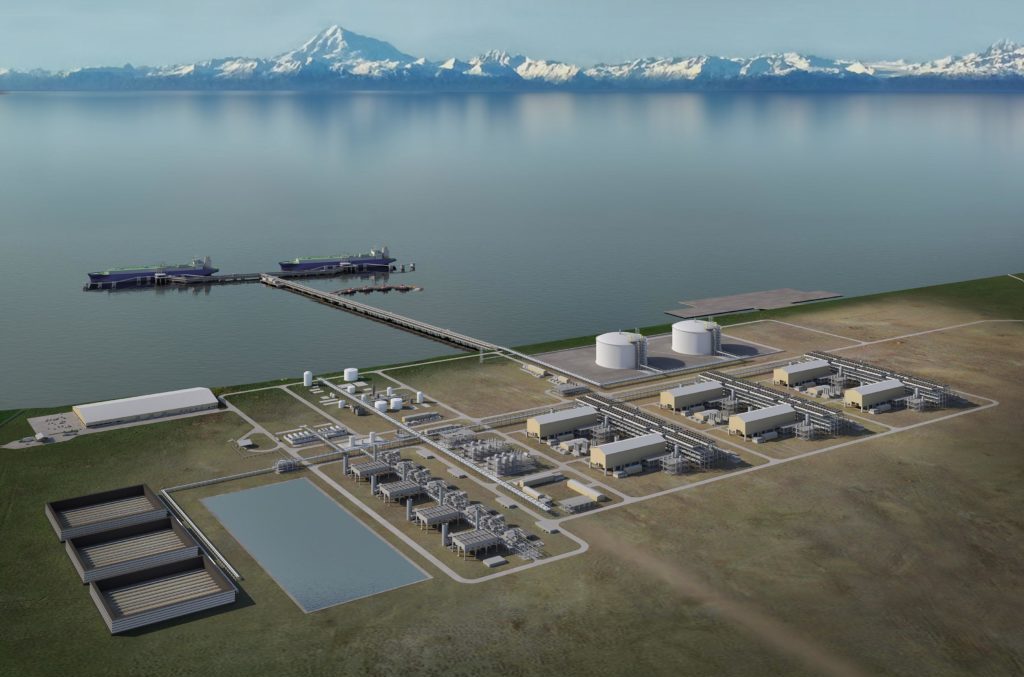The Week Ahead: Pipe dreams
Deteriorating trade relations between America and China threaten to stall a giant Alaska LNG export project. There will still be plenty of time to get it going again.

The Alaska LNG Project shows the potential benefits of a healthy trade relationship between United States and China.
Chinese investors are among the largest potential financial backers of the $42 million plan to build a production facility on the state’s northern coast, an 800-mile (1,300-kilometer) pipeline and a liquefaction facility at tidewater in the southcentral community of Nikiski. From there, the gas, worth perhaps $1 billion a year, will be exported, largely to China, reinvigorating the economy of a state that has seen its oil fortunes steadily decline in recent decades.
With numbers like that — along with Donald Trump’s hope of making America the world’s “dominant” energy producer — the project is almost too big not to get caught up in the emerging trade war between Beijing and Washington.
[Alaskans try for damage control as U.S.-China tariff dispute escalates]
Indeed, the project is currently in the crosshairs of two separate tariffs. It first became ensnared when the Trump administration, on March 23, imposed a 25 percent tariff on imported steel, the primary material used for construction of the pipeline. Some estimates suggest that, if the tariff remains in place during the entire construction phase, due to run from 2019 to 2025, it could add as much as $500 million to the project’s price.
On Friday, more potential damage was done when China’s Commerce Ministry announced it is planning retaliatory tariffs worth $60 billion on American goods. The list includes thousands of items, including LNG, which would be hit with a 25 percent tariff.
If imposed, a price increase of that size would probably push the cost of Alaska LNG beyond what China can get elsewhere. However, gas from Alaska LNG is not projected to come online for another seven years, meaning that, provided China goes through with its threat and that the tariffs remain in place until the gas starts flowing, it will be the project itself, in the form investor confidence, that will take the first hit.
[How Trump’s trade war hurts Alaska’s bid to build a gas line from the Arctic]
Likewise, even if Trump continues to stoke the trade dispute, he can only hold office until January 2025 (assuming he is re-elected in 2020). His successor must be equally hawkish on trade if the tariffs imposed during his term are to outlive his presidency.
State officials, including Bill Walker, the governor, do not plan on waiting that long. Their response to tariff threats against the state’s economy has been to make their case directly to Beijing and Washington. In May, Walker and 40 other businesspeople from the state travelled to China on a mission to promote exports of LNG and other products. According to a recent statement, the governor is also working with the Trump administration to make sure that Beijing and Washington reach a “fair compromise so that Alaska’s natural gas reaches the market”.
Even so, waiting for Trump’s tariffs to end is an option. Gene Therriault, a spokesperson for the project, calls it “multigenerational” and reckons it can match Chinese demand for a century. Provided they do not scupper the project before it gets started, the tariffs, then, may just be a short-term problem for its long-term economic solution.
The Week Ahead is a preview of some of the events related to the region that will be in the news in the coming week. If you have a topic you think ought to be profiled in a coming week, please email [email protected].